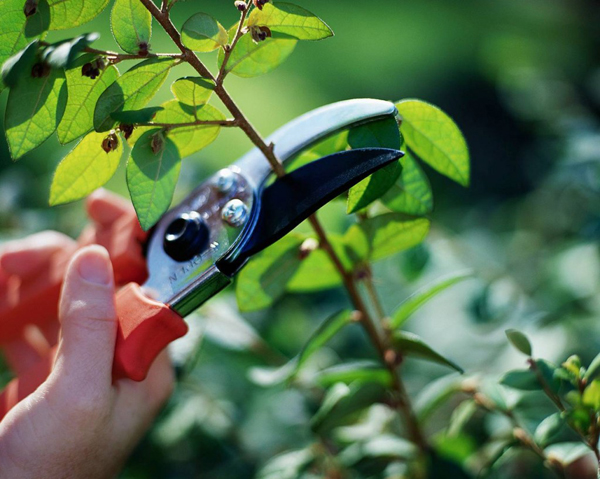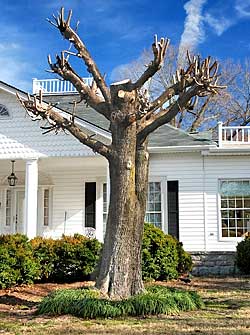
The coldest part of the winter is the perfect time to trim and prune bushes, woody ornamentals and trees. Of course, if you remove branches of spring flowering plants, you will greatly reduce or eliminate any blooms this year. So you may want to constrain your trimming zeal to the plants that bloom after July 1st. When the spring flowering plants have finished their show this spring, then prune them.
Pruning is good for health and appearance. It should be part of the annual inspection of your trees and bushes. Reasons to prune:

Pruning is not tree topping. This local practice of reducing a tree to a trunk with only stubbed limbs remaining is horrifying.
1. Prune to maintain plant health. Remove dead, damaged or diseased plant tissue to maintain plant health and vigor.
2. Prune to remove misshapen, crowded and rubbing branches and branches with narrow crotch angles.
These pruning cuts eliminate problems before plant damage occurs.
3. Prune to increase flowering and fruiting. More flower buds will be formed for the following season if old flowers are removed when they lose their attractiveness, a practice called dead-heading.
4. Prune to train plants to a particular size or shape, including hedge and espalier forms.
5. Prune to rejuvenate old, overgrown shrubs and restore plant density, shape and vigor. Large-habit plants in the wrong place, like hollies, privet and photinia planted in front of windows, should be replaced.
(From Best Management Practices for Pruning Landscape Trees, Shrubs and Ground Covers, a great resource on the topic published by The UT Extension Service. It is available in pdf format here)
Pruning is not tree topping. This local practice of reducing a tree to a trunk with only stubbed limbs remaining is horrifying, a misconstrued effort and totally wrong. Instead, selectively and intelligently remove dead limbs and limbs that cross over each other, keeping the one with the best growth pattern. If you don’t know what the plant should ideally look like, use your resources!
The local UT Extension office does offer a class or two in the winter on pruning. The class often includes a walk out to the orchard and vineyard for direct application of the lesson.
There is also a free class on backyard fruit production scheduled in the Livestock Building for Feb. 3 and Feb. 10 at 6 p.m. If you are interested in either of these, please contact the Extension office at (615) 898-7710.













